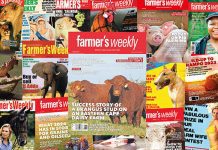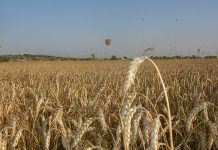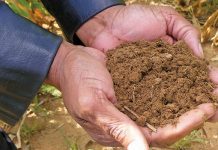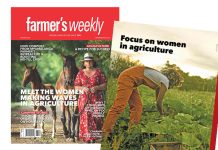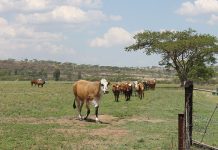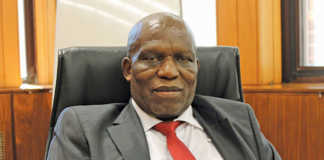My parents farm in Pongola, KwaZulu-Natal. Like so many other farmers in this drought-stricken province, they have waited months for signs of rain. On that day, just 18mm of rain fell in a few hours, hardly enough to soak even the top layer of the parched soil.
By evening the rain meter held the only proof of that morning’s drizzle.
The Bivane Dam, which supplies water to irrigation farmers in and around Pongola, is now at about 40% of capacity and it is months before the rainy season starts. Severe water restrictions already apply to farmers who rely on water from the dam for irrigation, and their sugarcane crops have suffered so much damage that they will not recover fully even
if it starts raining soon.
The last time the dam level fell this low was in 2003 and if no more rain falls in the catchment area within the next few weeks the water level (and the farmers’ morale) will sink to its lowest levels since the dam was built in 2000. It has been reported that across the province, dam levels are the lowest they have been in 13 years, with some dams at only 30% of capacity.
When I was in primary school, the town used to get together to pray for rain. The heavens never opened while we were praying, but eventually it always did rain. These days these ‘eventualities’ seem to be growing fewer and further apart.
Earlier this year farmers in South Africa’s main maize production regions experienced the worst drought since 1992 and as a result maize production was down by more than a third.
In this week’s issue, we report on citrus farmers in the Gamtoos Valley in the Eastern Cape (pg13) who recently received so much rain that they feared they would not be able to get into the orchards to harvest the fruit before it spoiled.
The only farmers who are having a relatively normal year are those in the Western Cape (pg16), where, after a slow start to the winter rainfall season, dams are now filling up fast. But this did not apply to all the farmers in the province. One farmer in the Koue Bokkeveld has recorded consistent below-average monthly rainfall since the start of the year, with January to March being the driest since 1965 when they first started keeping records.
Perhaps it’s a cycle, maybe El Niño is to blame, or it is the effects of climate variability or climate change. It is important that farmers now prepare, as best they can, for a future in which rainfall patterns and water availability will become, at best, uncertain.

